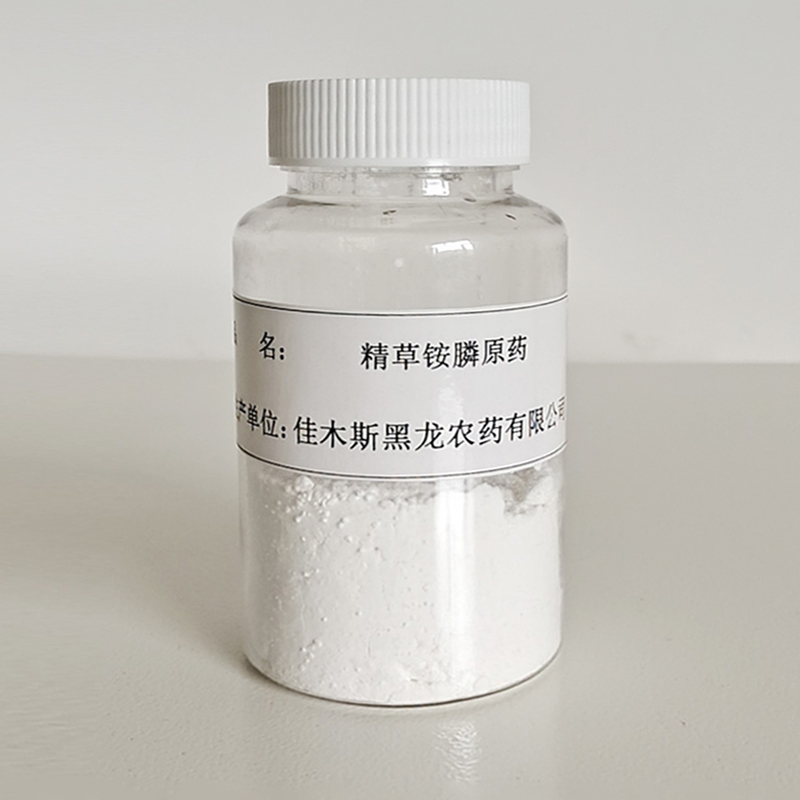Features and Advantages of L-Glufosinate
What is L-Glufosinate?
L-Glufosinate, also known as glufosinate-ammonium, is a naturally occurring herbicide derived from the soil bacterium Streptomyces viridochromogenes. It is chemically similar to the amino acid glutamate, which allows it to inhibit glutamine synthetase, an enzyme crucial for nitrogen metabolism in plants. By disrupting this enzyme's function, L-Glufosinate causes a rapid accumulation of ammonia within the plant cells, leading to cell membrane disruption and ultimately, plant death.
Key Features and Advantages
Broad-Spectrum Control
L-Glufosinate is renowned for its ability to control a wide range of annual and perennial weeds, including both grassy and broadleaf varieties. This broad-spectrum control makes it a versatile herbicide suitable for various crops and agricultural settings.
Non-Selective Action
As a non-selective herbicide, L-Glufosinate targets all vegetation, making it particularly useful for weed management in non-crop areas, such as fence lines, roadsides, and industrial sites. Its non-selective nature ensures that it effectively eliminates unwanted vegetation, providing a clean slate for planting or maintaining clear areas.
Rapid Action
One of the notable advantages of L-Glufosinate is its rapid action. Weeds treated with this herbicide show visible symptoms within a few days, and complete control is typically achieved within a couple of weeks. This quick action helps farmers manage weeds more efficiently, reducing competition for resources and promoting healthier crop growth.
Environmental Safety
L-Glufosinate is considered environmentally safe due to its low soil persistence and minimal leaching potential. It breaks down relatively quickly in the environment, reducing the risk of long-term contamination. Additionally, its low volatility minimizes the potential for off-target movement, making it a safer option for surrounding flora and fauna.
Resistance Management
With the increasing prevalence of herbicide-resistant weed species, L-Glufosinate serves as a valuable tool in integrated weed management programs. Its unique mode of action makes it effective against weeds that have developed resistance to other herbicides, such as glyphosate. By incorporating L-Glufosinate into their weed control strategies, farmers can mitigate the spread of resistance and maintain effective weed management.
Applications of L-Glufosinate
Crop Production
In crop production, L-Glufosinate is used both as a pre-plant and post-emergence herbicide. It is commonly applied in crops genetically modified to tolerate glufosinate, such as certain varieties of corn, soybeans, and cotton. This selective use allows farmers to target weeds without harming their crops, leading to improved yields and reduced crop losses.
Orchard and Vineyard Management
L-Glufosinate is also widely used in orchards and vineyards to manage weeds that compete with fruit trees and grapevines for nutrients and water. By maintaining weed-free zones around the plants, farmers can enhance the growth and productivity of their orchards and vineyards.
Non-Crop Areas
In non-crop areas, such as along roadsides, railways, and industrial sites, L-Glufosinate is employed to control unwanted vegetation and maintain clear, safe environments. Its effectiveness in these settings helps prevent fire hazards, maintain infrastructure, and promote safety.
Conclusion
L-Glufosinate stands out as a crucial herbicide in modern agriculture due to its broad-spectrum control, rapid action, environmental safety, and role in resistance management. As farmers continue to face challenges from weed infestations and herbicide resistance, L-Glufosinate offers a reliable and effective solution. By incorporating this herbicide into integrated weed management programs, farmers can enhance crop productivity, maintain sustainable farming practices, and ensure the long-term viability of their agricultural operations.
The technical purity of L-Glufosinate is ≥ 90% TC, ensuring its efficient weed control effect in agricultural applications. Huimeng production capacity reaches 100,000 tons per year, ensuring the satisfaction and stable supply of large-scale agricultural needs. L Glufosinate Ammonium can be quickly degraded during use, reducing the long-term impact on the environment. Its exact mass is 181.05000, PSA is 110.43000, and LogP is 0.38890, showing the key characteristics of its chemical properties and environmental behavior.


